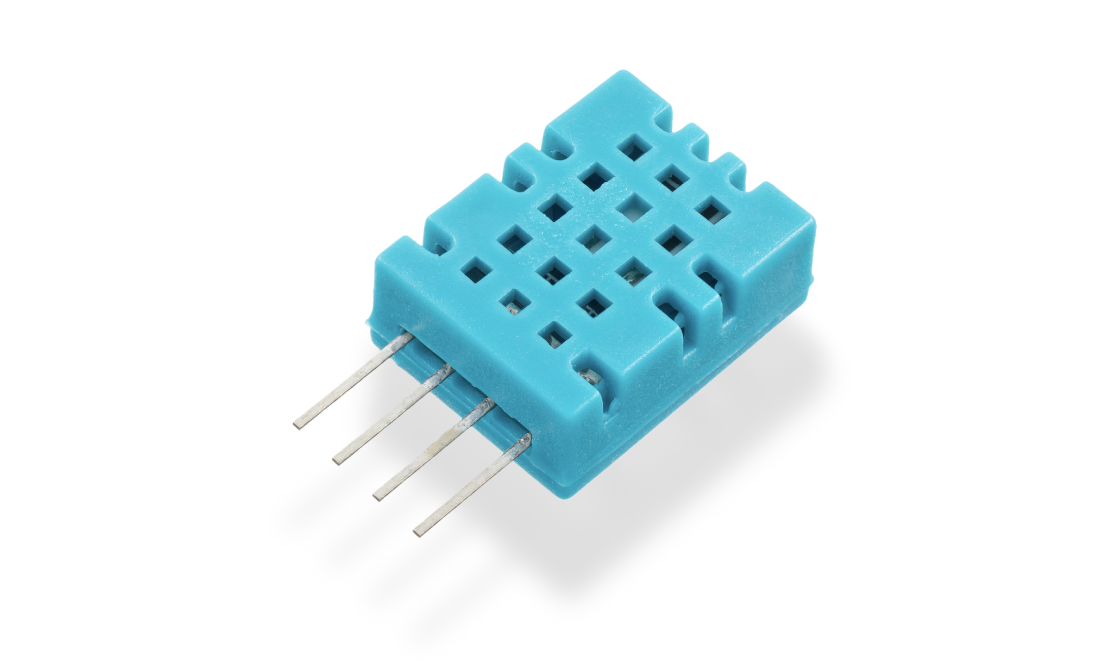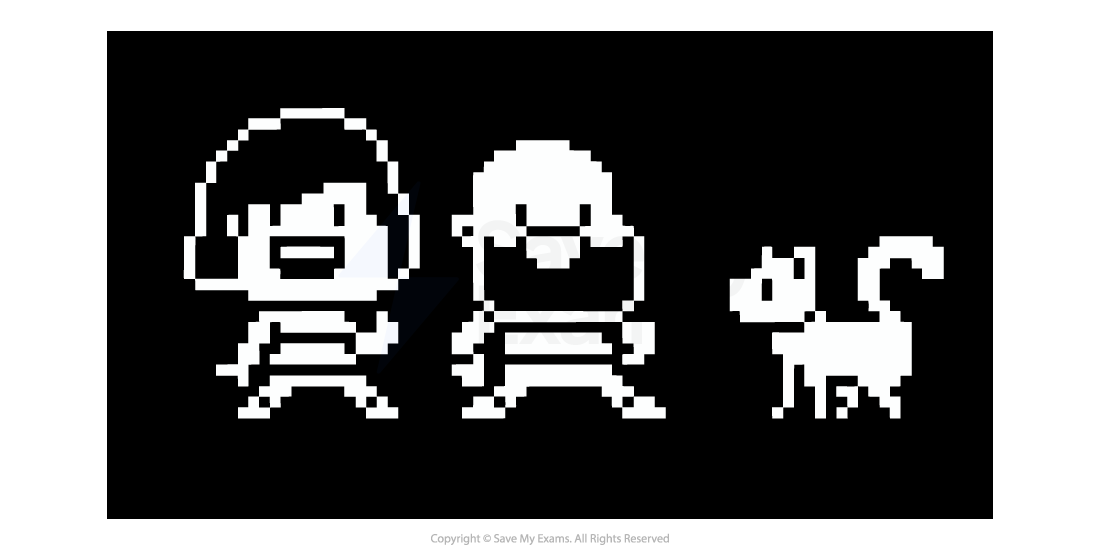Representing Images (AQA GCSE Computer Science): Revision Note
Exam code: 8525
Pixels
What is a bitmap?
A bitmap image is made up of squares called pixels, meaning picture elements
A pixel is a single point in a image
Each pixel is stored as a binary code
Binary codes are unique to the colour in each pixel
A typical example of a bitmap image is a photograph

The more colours and more detail in the image, the higher the quality of the image and the more binary that needs to be stored
Image Size & Colour Depth
What is image size?
image size is the total amount of pixels that make up a bitmap image
The image size is calculated by multiplying the height and width of the image (in pixels)
In general, the higher the image size the more detail in the image (higher quality)
What is colour Depth?
Colour depth is the number of bits stored per pixel in a bitmap image
The colour depth is dependent on the number of colours needed in the image
In general, the higher the colour depth the more detail in the image (higher quality)
In a black & white image the colour depth would be 1, meaning 1 bit is enough to create a unique binary code for each colour in the image (1=white, 0=black)

In an image with a colour depth of 2, you would have 00, 01, 10 & 11 available binary codes, so 4 colours

As colour depth increases, so does the amount of colours available in an image
The amount of colours can be calculated as 2n (n = colour depth)
Colour Depth | Amount of Colours |
1 bit | 2 (B&W) |
2 bit | 4 |
4 bit | 16 |
8 bit | 256 |
24 bit | 16,777,216 (True Colour) |
What is the impact of image size and colour depth?
As the image size and/or colour depth increases, the bigger the size of the file becomes on secondary storage
The higher the image size, the more pixels are in the image, the more bits are stored
The higher the colour depth, the more bits per pixel are stored
Striking a balance between quality and file size is always a consideration

Calculate Bitmap File Size
How do you calculate the size of a bitmap image?
Calculating the size of a bitmap image is carried out with the following formula:
Image size x colour depth OR
Image width x image height x colour depth
Example
Image Files | ||||||||||||
|---|---|---|---|---|---|---|---|---|---|---|---|---|
(Image size) x (Colour Depth) | ||||||||||||
|
OR
Image Files | |||||||||||||||
|---|---|---|---|---|---|---|---|---|---|---|---|---|---|---|---|
(Image width) x (Image height) x (Colour Depth) | |||||||||||||||
|
Converting Between Binary Data & Bitmaps
How do you convert binary data into a bitmap image?
To convert binary data into a bitmap image:
Image metadata is read
Using this information binary data can be mapped to individual pixels
A bitmap image is created
What is metadata?
Metadata is data about data
Metadata is additional information stored with the image, it provides context and information
Examples of metadata that are stored are:
Image size
Colour depth
Author - Who created the image?
Date/Time - When and what time was the image created/taken?
Location - Where was the image taken?
Example
A bitmap image with binary data:
Binary data |
|---|
111111111110111011100010001100000001100000001110000011111000111111101111111111111 |
And metadata of:
Width: 9px
Height: 9px
Colour depth: 1 bit
1 bit is a monochrome image (B&W), typically 1 = black and 0 = white
Every 9 pixels a new line is created
The resulting image would be:
Binary data | ||||||||
|---|---|---|---|---|---|---|---|---|
1 | 1 | 1 | 1 | 1 | 1 | 1 | 1 | 1 |
1 | 1 | 0 | 1 | 1 | 1 | 0 | 1 | 1 |
1 | 0 | 0 | 0 | 1 | 0 | 0 | 0 | 1 |
1 | 0 | 0 | 0 | 0 | 0 | 0 | 0 | 1 |
1 | 0 | 0 | 0 | 0 | 0 | 0 | 0 | 1 |
1 | 1 | 0 | 0 | 0 | 0 | 0 | 1 | 1 |
1 | 1 | 1 | 0 | 0 | 0 | 1 | 1 | 1 |
1 | 1 | 1 | 1 | 0 | 1 | 1 | 1 | 1 |
1 | 1 | 1 | 1 | 1 | 1 | 1 | 1 | 1 |
Bitmap image | ||||||||
|---|---|---|---|---|---|---|---|---|
|
|
|
|
|
|
|
|
|
|
|
|
|
|
|
|
|
|
|
|
|
|
|
|
|
|
|
|
|
|
|
|
|
|
|
|
|
|
|
|
|
|
|
|
|
|
|
|
|
|
|
|
|
|
|
|
|
|
|
|
|
|
|
|
|
|
|
|
|
|
|
|
|
|
|
|
|
|
|
|
|
How do you convert a bitmap image into binary data?
To convert a bitmap image into binary data:
Look at how many unique colours are used in the image and decide on the minimum number of bits needed to represent them (colour depth)
For each pixel, write down the binary code for the colour
Join together to create a binary bit pattern
Example
A bitmap image

4 unique colours = 2 bit colour depth (white, red, green, black)
white = 00, red = 10, green = 01, black = 11
 |
The binary digits can be joined together to make a binary bit pattern
Worked Example
1. Define the term Pixel [1]
2. If an image has a colour depth of 4 bits, how many colours can the image represent? [1]
3. Describe the impact of changing an image size from 500x500 to 1000x1000 [2]
Answers
A single point in an image [1]
16
The image quality would be higher [1] the file size would be larger [1]

Unlock more, it's free!
Did this page help you?